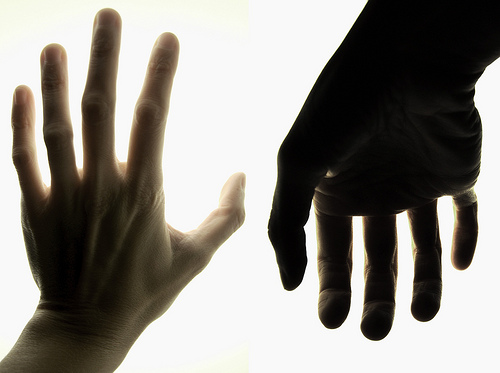Torah Sparks
Exodus 25:1 – 27:19
The discussion about making a sacred space – a Tent of Meeting (ohel mo`ed) – for Israel and God, a discussion that will occupy most of the rest of the book of Exodus, begins in this portion. The name, Tent of Meeting, derives from God’s promise to meet Moses in that place in order to continue giving Moses instruction for the people of Israel. (Ex. 25:22) But, in a more expansive way, the term is meant to signify that God and all of Israel will be able to meet in that sacred space.
The ways in which the Divine and the human will meet in that Tent are varied. The Tabernacle (- mishkan) will include various elements, including altars, a menorah and an ark to house the Torah. These features all serve in their way to facilitate or express the rendezvous of Israel and God.
One of the more peculiar items in the Mishkan is a uniquely designed table. Our common notion of a table pictures a flat horizontal surface held up by legs to a height that will make it easy to use the objects placed on the flat surface. But the Tabernacle’s table looks very different. It is taken over by two stacked sets of shelves, six shelves in each stack. The shelves make the table much more vertical than horizontal. These shelves are meant to hold twelve loaves of bread, called the Bread of the Countenance – lehem ha-panim – one loaf to a shelf. These loaves of bread are to be baked every Friday and then, on Shabbat, they are placed upon the stacked up shelves of the table. The loaves stay there for a whole week, replaced by new loaves of bread on the next Shabbat.
Why should the Tabernacle have these piles of bread? Apparently they were echoes of the customary practices performed in all ancient shrines. People were used to bringing gifts of food to feed the gods. Here, too, we are commanded to place loaves of bread before God – in front of God’s Countenance. The table reaches upward rather than sideways, expressing that this is a gift to God.
But the loaves in the Tabernacle were presented within a very special context. As the Israelites moved through the wilderness toward their Promised Land they did not depend on eating bread to survive. Rather, they were sustained by heavenly food, called manna. The manna was not quite like bread. It fell from heaven and then was gathered every morning and had to be eaten on that day. It did not keep for the next day. But on Friday, the sixth day of the week, a double portion fell so that the Israelites would not have to gather their food on Shabbat. Miraculously, the manna that fell on Friday would last an extra day and not spoil. This was the gift of God to Israel.
By contrast, the gift of Israel to God was a foodstuff – bread – that had to be laboriously prepared. And it had to stay, unspoiled, for a whole week. It was put out for God on the Shabbat, precisely the day that God did not put the heavenly bread out for Israel. And the loaves were twelve. This number corresponds to the twelve tribes of Israel. But, stacked in two piles of six, the association would naturally be made that this number represented six double portions – rather than God’s gift of only one double portion, given on the Sixth Day.
The meeting between God and Israel is effected in this way as a kind of mirror imaging. While God gives to us effortlessly, we give back to God “though the sweat of our brow.” (Gen. 3:19) While God separates the Shabbat as an uneventful day of rest, we designate Shabbat as the day of worshipful gifts to God. While the wilderness was left empty of bread on Shabbat, we pile our table high, turning Shabbat into a day of utmost fullness.
It is through these differences from one another, expressed so elaborately in the tent, that we turn it into a Tent of Meeting.
Shabbat Shalom
Rabbi David Greenstein
![]()
Subscribe to Rabbi Greenstein’s weekly d’var Torah
image: “Difference” © Giuvax used with permission via Creative Commons License
- Toby Stein: In Memoriam - Thu, Feb 8, 2024
- Faithfulness and Hope: Parashat Sh’lach - Thu, Jun 23, 2022
- Past Their Prime: Parashat B’ha`a lot’kha - Thu, Jun 16, 2022

